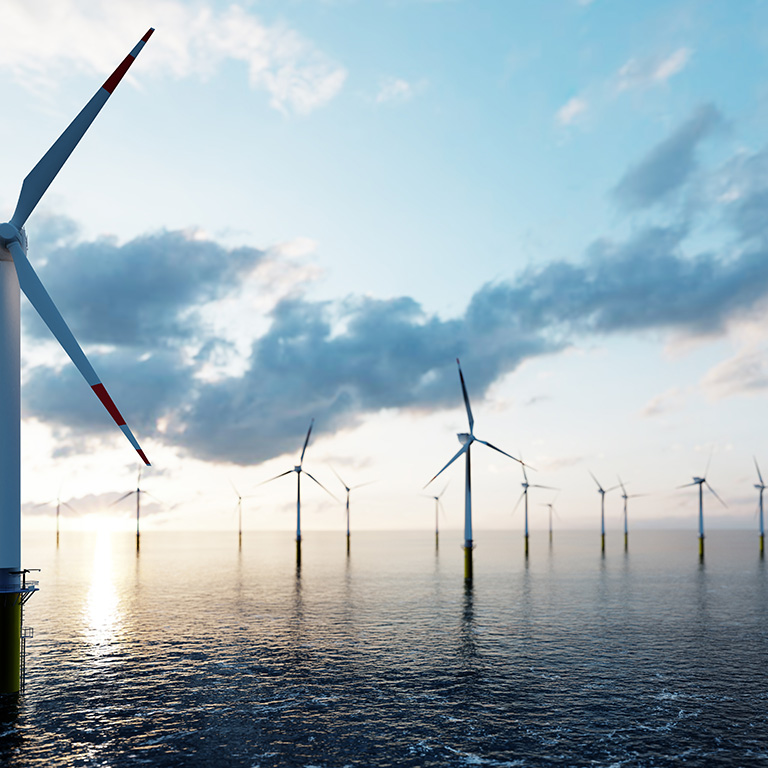
By Kate Fowler ,
Global Nuclear Energy Leader, Marsh Specialty
06/02/2023 · 4 minute read
It is becoming increasingly clear that a robust nuclear generating fleet has an important role in helping societies meet net zero climate goals globally, including those outlined in the Paris Agreement, the United Nations 2030 Agenda for Sustainable Development, and the Net Zero World Initiative spearheaded by the United States.[1] Nuclear power plants generate baseload electricity on a highly reliable basis and without operational emission of greenhouse gasses. A recent study[2] by the United Nations Economic Commission for Europe concluded that the use of nuclear power has averted the production of some 74 gigatons of carbon dioxide within the last 50 years.
In continued support of achieving net zero goals, many countries are turning, or returning, to nuclear as a key source of carbon free baseload power. Despite more than seventy nuclear power plants shuttering in the last two decades[3], approximately 440 commercial nuclear reactors continue to safely operate in 32 countries.[4] Additionally, more than fifty reactors are currently being built in 15 countries with the World Energy Outlook report from the International Energy Agency projecting over 26% of nuclear capacity growth by 2050. With these projections, nuclear energy would provide 525GWe of clean energy globally, supporting reduction of carbon producing technologies. In the US alone, 90 GWe of new nuclear is expected in the next 25 years which will double current output.[5]
Interest and development of small modular reactors (SMR) continues to grow globally as the desire to economise and expedite nuclear deployment increases. More than 70 SMR designs are being developed around the world with the common goal of modularisation to reduce deployment costs and increase construction efficiency.[6] With high cost of construction and long construction timelines, gigawatt scale reactors have been cost prohibitive for many countries, but the emergence of SMR technologies in conjunction with high energy prices is raising interest in nuclear for many countries, including those without current operational reactors, such as Poland. Many regions are considering SMRs not only energy production, but for district heating, desalination, hydrogen production, and industrial applications.
Contributing to the resurgence of nuclear in support of clean energy goals, many countries are introducing legislation that provides regulatory certainty in support of new nuclear facilities. In the US, the Infrastructure and Jobs Act, the biggest policy impacting nuclear since the 1950s, included US$6 billion in funding to support not only continued operations of the existing fleet of reactors in the US, but also for new nuclear technology deployment as well. The tax credits that were introduced for technology neutral carbon free generation, position nuclear on a level playing field with other carbon free technologies. In the European Union, taxonomy regulation was passed in 2022 to recognise new nuclear as a sustainable energy source to encourage investment within the technology in EU countries.[7]
With the resurgence of new nuclear, challenges and questions are being raised by developers and utilities around global nuclear insurance needs. Countries have specific third-party nuclear liability limits which are insured by the global nuclear pools; however, these limits were put in place by governments in support of gigawatt scale reactors and most did not contemplate what limits should be required for small commercial nuclear installations. Additionally, insurers globally continue to learn more about various SMR technologies as their development proceeds and rating models must be reworked to account for first-of-a-kind fuels and coolants, as well as increased safety factors designed within these plants. Many projects will require coverage for delays in start-up during construction which may challenge insurance markets given the first-of-a-kind nature of the proposed technologies.
While the growth of nuclear facilities has been hampered over the last three decades, the drive for net zero energy sources is reinvigorating support for the industry, and new technology deployment methodologies are addressing hurdles the industry has historically faced with gigawatt scale builds. Nuclear is, and will continue to be, a key base-load power technology able to support global net zero carbon emission goals.
1 U.S. Launches Net-Zero World Initiative to Accelerate Global Energy System Decarbonisation | Department of Energy
2 International climate objectives will not be met if nuclear power is excluded, according to UNECE report | UNECE
3 Amid Global Crises, Nuclear Power Provides Energy Security with Increased Electricity Generation in 2021 | IAEA
4 Plans for New Nuclear Reactors Worldwide - World Nuclear Association (world-nuclear.org)
5 Nuclear Industry Successes in 2022 and More to Come in 2023! on Vimeo
6 What are Small Modular Reactors (SMRs)? | IAEA
7 A guide to the EU's 'green' taxonomy - and nuclear's place in it : Energy & Environment - World Nuclear News (world-nuclear-news.org)

11/09/2024